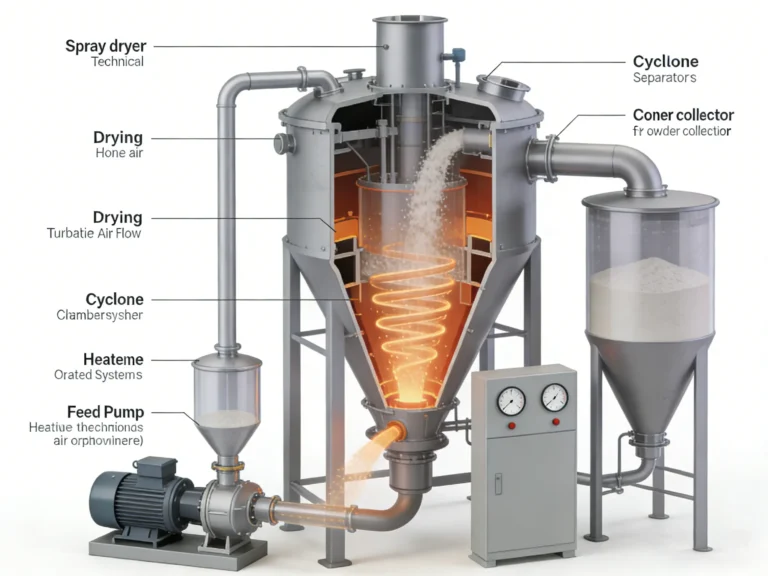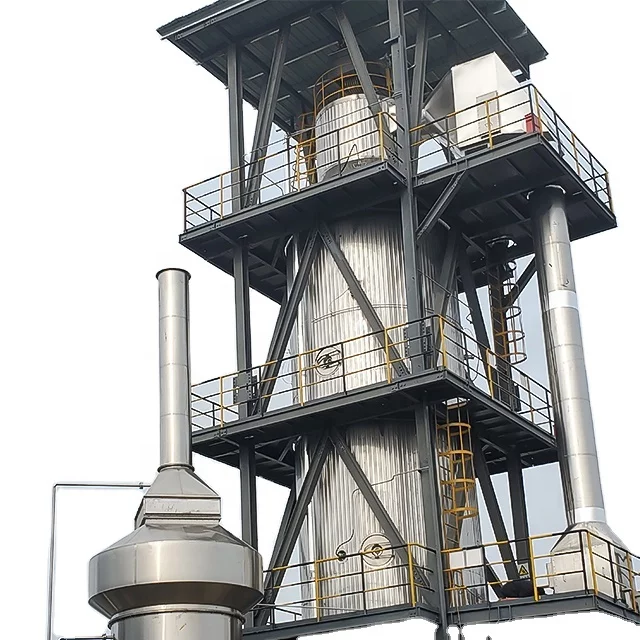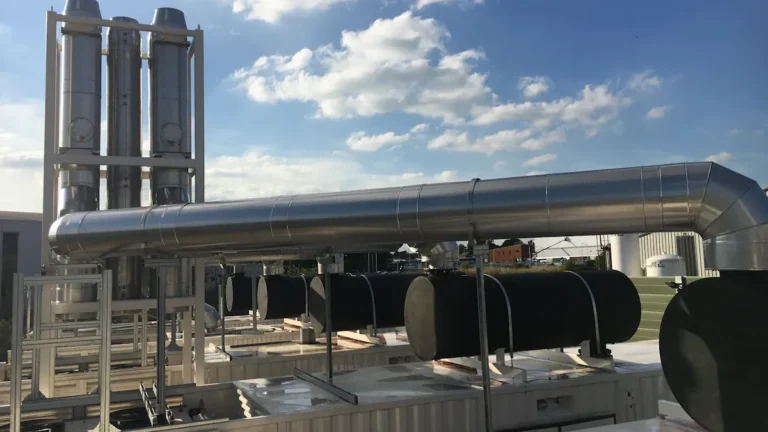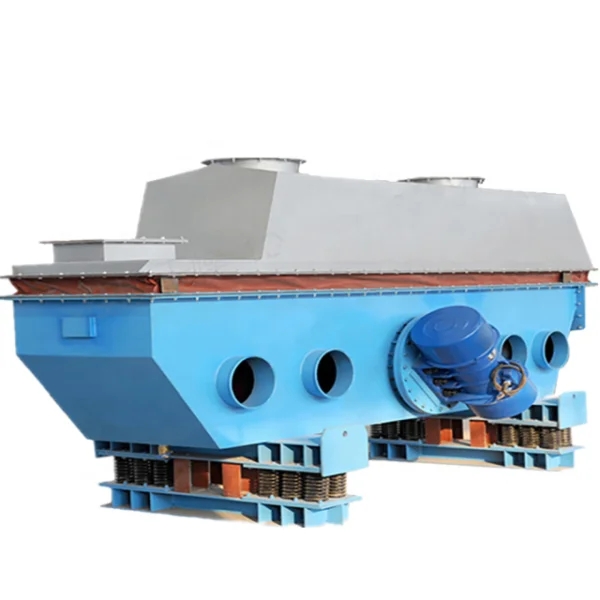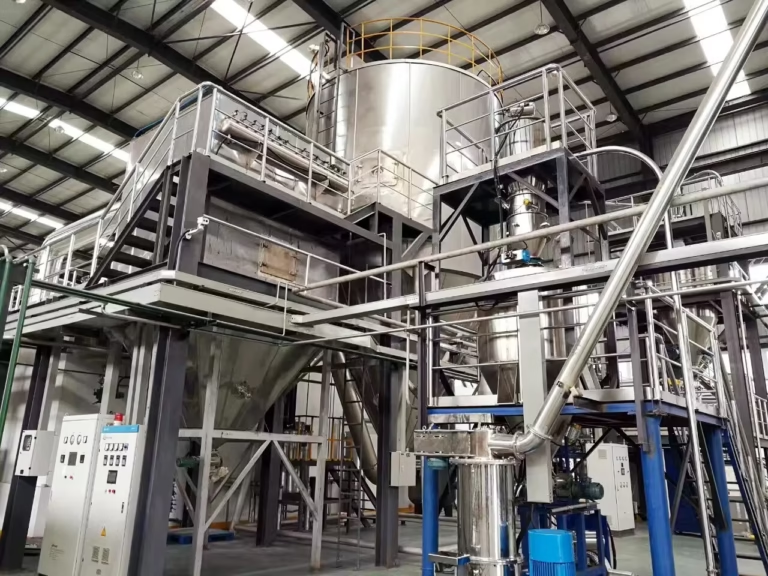旋转雾化器喷雾烘干机与喷嘴雾化器用于工业用途
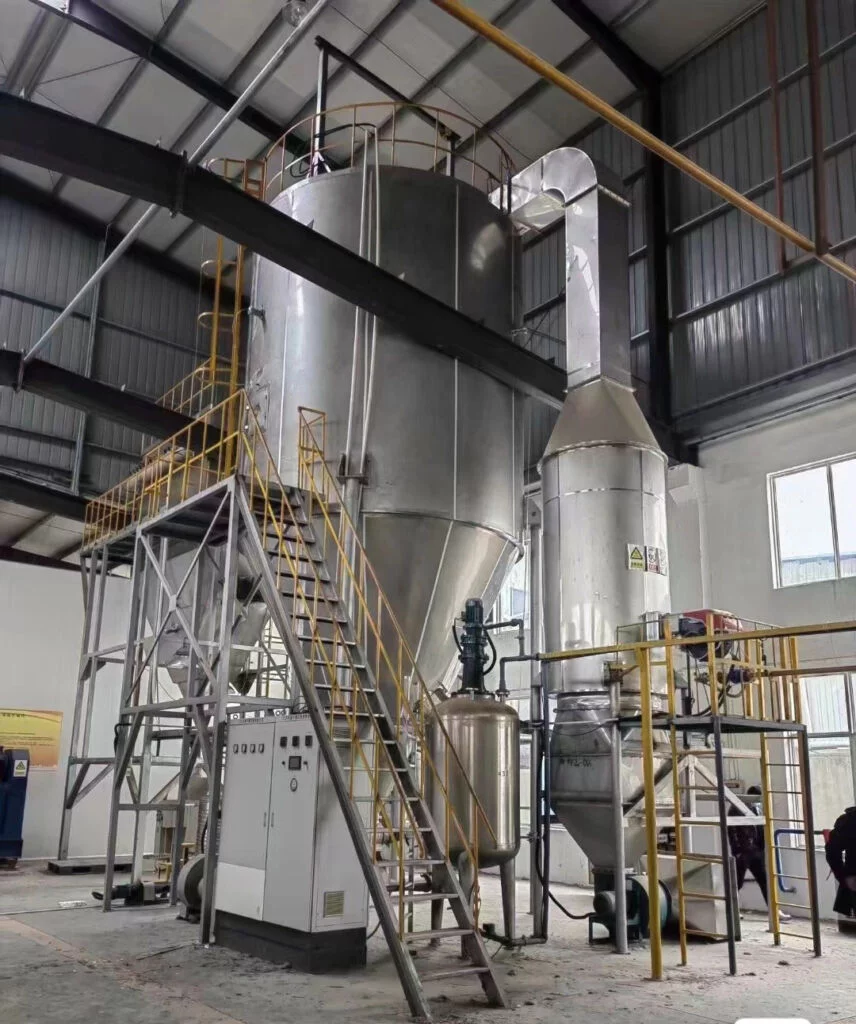
决策者经常问哪种雾化器喷雾干衣机最适合工业需求. 旋转雾化器和喷嘴雾化器都传递 稳健的性能和可靠性 在大规模生产中. 旋转雾化器提供连续处理和处理 高流速, 使它们在欧洲流行. 喷嘴原子剂, 在美国受到青睐, 在生产较细的液滴方面表现出色,可以提高产品质量. 每种雾化技术都支持过程效率和安全性. 正确的选择取决于饲料属性, 所需的粒径, 和运营优先事项.
关键要点
旋转雾化器 手柄厚, 高粘度供应良好并抵抗堵塞, 使它们非常适合大规模, 连续生产.
喷嘴原子剂 生产更好, 更多均匀的液滴, 提高产品质量,适合需要精度和卫生的行业.
旋转雾化器使用更少的能源,具有更高的吞吐量,但需要更多的维护,并且可能比喷嘴导致更多的停机时间.
选择合适的雾化器取决于饲料特性, 所需的粒径, 维护限制, 和成本考虑.
定期清洁, 操作员培训, 和智能控制有助于保持效率并延长两种雾化器类型的使用寿命.
雾化器喷雾干燥基础知识
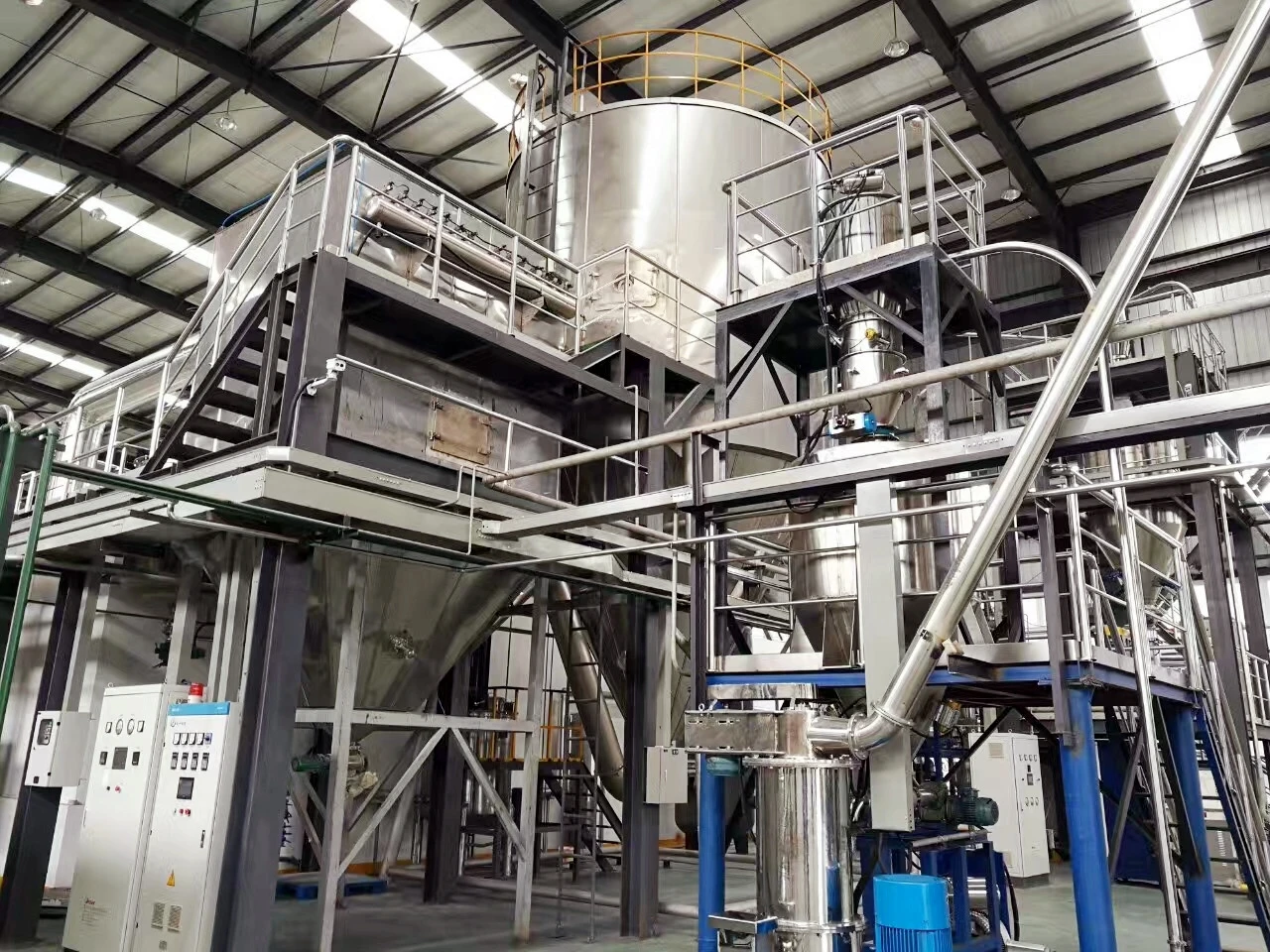
旋转雾化器
旋转雾化器 在许多工业雾化器喷雾干燥系统中发挥核心作用. 这些雾化器使用快速旋转的轮将液体进料分解成细小的液滴. 然后液滴进入热气流, 他们很快就会干的地方. 旋转雾化器可处理各种粘度的进料,并且可以处理大量物料, 使它们非常适合连续生产.
最近的工业研究表明,即使在采矿和建筑等严酷的环境中,旋转雾化器也可以实现高性能. 例如, 使用3D打印的高级设计 具有提高的耐用性和耐化学性. 研究人员还使用了高速成像和建模来研究液体如何形成液滴. 他们发现厚度 在雾化器出口处的液体喷气机 影响液滴尺寸. 通过调整速度和设计, 操作员可以控制喷雾方式并提高能源效率.
旋转雾化器具有灵活性和可靠性, 特别是当处理属性变化时处理进料时.
喷嘴原子剂
喷嘴是另一个关键技术 雾化器喷雾器系统. 这些雾化器使用 压力喷嘴或两个流体喷嘴 创造细小的喷雾. 压力喷嘴在高压下迫使液体通过小开口, 经常达到 300 酒吧. 双流体喷嘴将液体与压缩空气混合, 通常介于 4 和 10 酒吧, 形成液滴.
喷嘴可以产生非常细小的液滴, 这有助于生产具有均匀粒径和一致质量的粉末.
喷嘴的设计, 包括它的角度和内部结构, 影响喷雾图案和液滴尺寸.
压力喷嘴适用于中低粘度进料,在食品中很常见, 制药, 和化学工业.
数值模拟和实验表明,调节喷雾压力可以改变雾滴尺寸和降尘性能.
喷嘴可能面临堵塞的挑战, 尤其是在处理较厚的饲料时.
使用喷嘴的雾化器喷雾干燥系统可精确控制产品质量. 然而, 操作员必须考虑压力喷嘴的局限性, 例如对饲料特性的敏感性以及定期维护的需要.
主要差异

液滴尺寸控制
液滴尺寸控制是一个关键因素 喷雾干燥. 操作员依靠精确的液滴尺寸来影响粉末质量, 干燥速度, 和产品的一致性. 旋转雾化器使用旋转盘将液体向外喷射, 将其分解成水滴. 圆盘的速度和液体的性质, 例如粘度和表面张力, 确定所得液滴尺寸. 通过调整光盘速度, 操作员可以改变平均液滴尺寸, 但尺寸范围通常仍然很宽.
喷嘴, 另一方面, 使用压力或空气迫使液体通过小开口. 这个过程通过分解液体流来创建液滴. 喷嘴通过改变压力或气体与液比,可以更直接控制液滴尺寸. 喷嘴的较高压力通常会导致较小的液滴. 两流体喷嘴, 混合空气和液体, 允许更精细的调整. 操作员可以通过改变气压或喷嘴几何形状来微调液滴尺寸. 这种控制水平有助于产生具有非常均匀特征的粉末.
提示: 对于需要严格控制液滴尺寸和最小变化的应用, 喷嘴提供了明显的优势.
粒度分布
粒度分布描述了干燥后有多少个颗粒落入每个尺寸范围. 此属性影响流动性, 溶解度, 和粉末的最终用途. 旋转雾化器往往会产生更广泛的粒径分布. 旋转的圆盘产生多种尺寸的液滴, 尤其是在加工粘度较高的饲料时. 这种灵活性使旋转雾化器能够处理各种进料特性, 但它可能会产生混合粒径的粉末.
喷嘴, 特别是叶片设计和双流体类型, 在某些区域产生更均匀的粒径分布. 喷嘴的设计和工作压力起着重要作用. 例如, 增加双流体喷嘴中的气压可减少大液滴的数量, 导致分布更加紧密. 计算研究和实验表明喷嘴设计会影响液体和气体的混合方式, 决定了最终的粒度分布.
下表总结了 旋转雾化器和喷嘴之间的关键统计比较:
公制 / 方面 | 旋转雾化器 (旋转盘) | 喷嘴原子剂 (传统的 & 刀片设计) |
|---|---|---|
关键指标 | VMD-NMD比率, 变异系数, 相对跨度因子 (无国界医生组织), 松香·拉默 (RR) 分配 | 索特平均直径 (贴片式), 配电配件 (RR, MRR), 变异系数 |
液滴尺寸分布 | 分布更广,液滴更大; 受光盘速度影响, 流量, 和液体特性 | 某些地区分布更加均匀, 受喷嘴设计和操作参数的影响 (例如, 气液比, 气压) |
均匀度 | 通过 VMD-NMD 比率和 RSF 进行评估; 均匀性随着雷诺数和圆盘速度的增加而提高 | 叶片设计的喷嘴减少速度分层, 增强均匀性; 空气压力决定双流体喷嘴中的液滴尺寸 |
喷雾形成模式 | 随着流速的增加,从直接滴落过渡到韧带和片状形成; 观察到混合模式 | 确定了主要和次要破裂区域; 破裂形态随压力和气体速度的变化而变化 |
影响因素 | 光盘速度, 流量, 表面张力, 液体粘度 | 气压, 液体速度, 粘度, 表面张力, 喷嘴几何形状 |
统计分布模型 | 松香·拉默 (RR) 和改性松香冲击锤 (MRR) 分布很好地拟合实验数据 | 最大熵法, 离散概率函数 (柴油颗粒过滤器), 用于模拟液滴尺寸的经验方法 |
喷嘴擅长产生一致的液滴尺寸和窄的粒径分布. 旋转雾化器, 虽然不太精确, 为具有较高粘度或可变特性的饲料提供更大的灵活性. 这些雾化方法之间的选择取决于所需的粉末质量和进料的性质.
性能因素
效率
工业操作员通常根据雾化器喷雾干燥机将液体进料转化为干粉的效果来评估雾化器喷雾干燥机. 有几个指标可以帮助衡量这个过程:
覆盖范围: 测量喷雾到达的面积, 影响均匀性.
颗粒分布: 显示水滴如何均匀传播, 影响混合和干燥.
渗透性: 告诉液滴到达目标表面的情况, 这对于产品质量很重要.
螺旋桨-雾化器距离: 影响喷涂效率, 如烟雾和激光测试所示.
研究人员使用维度分析和符号回归等先进工具来预测液滴大小和扩散. 这些方法帮助操作员实现对液滴尺寸的精确控制, 错误低至 ±15%. Rosin-Rammler 分布函数通常对工业环境中的液滴尺寸进行建模. 操作员依靠这些工具来保持喷雾干燥的高效率.
吞吐量
吞吐量描述了雾化器在给定时间内可以处理多少产品. 旋转雾化器和喷嘴雾化器在这方面表现出明显的差异. 下表比较了典型 性能数据:
公制 | 喷嘴雾化器 (雪炮) | |
|---|---|---|
功耗 | 9.7 千瓦/小时 | 160 千瓦/小时 (泵) + 75 千瓦 (发动机) |
典型水通量 | ~80 加仑/分钟 | ~54 加仑/分钟 |
蒸发效率 | 更高 (〜80% <150 微米) | 降低 (~14% 蒸发) |
液滴尺寸分布 | 50-120 微米 (80% <150 微米) | 500-600 微米平均 |
运营挑战 | 无堵塞 | 经常堵塞, 过喷 |
蒸发成本效率 | 每单位成本更低 1,000 加仑 | 更高的运营费用 |
旋转雾化器产生更小的液滴, 增加表面积并加速蒸发. 它们还可以避免堵塞并实现稳定的流量. 喷嘴雾化器产生较大的液滴,通常会回落, 减少蒸发并提高成本. 旋转雾化器以更少的能量处理更高的吞吐量, 使它们成为大规模运营的有力选择.
饲料处理
粘度和固体
进料粘度和固体含量起着重要作用 雾化器喷雾干燥机性能. 旋转雾化器可轻松处理各种粘度和高固体含量. 其旋转盘设计可让浓稠或浓缩的饲料均匀分布, 这有助于保持一致的液滴形成. 相比之下, 喷嘴雾化器通常在低至中等粘度的进料中效果最佳. 高粘度或高固体含量会导致压力下降和喷雾图案不均匀.
医药喷雾干燥研究表明 进料浓度直接影响液滴尺寸 和, 反过来, 干燥颗粒的空气动力学直径. 这种关系影响产品质量和流程效率. 对流化床喷嘴的研究表明 进料成分影响附聚物尺寸和液膜厚度, 这可以改变传热和传质的发生方式. 例如, 空芯液环 (ACLR) 喷嘴可以处理饲料 粘度高达 3 Pa·s 和干物质含量高达 57% 按重量. 然而, 较高的粘度导致内部流动不稳定和更广泛的液滴尺寸, 有时产生的液滴大于 500 微米. 这些发现证实粘度和固体含量是雾化器选择和操作的关键因素.
操作员应始终将雾化器类型与饲料的粘度和固体含量相匹配,以确保稳定的性能和高产品质量.
抗堵塞性
堵塞会扰乱喷雾干燥操作并降低效率. 旋转雾化器有一个 开放式结构,抗堵塞, 即使在加工含有悬浮固体或高粘度的饲料时. 这种设计优势允许更长的运行时间和更少的清洁频率. 实验研究强调旋转雾化器可保持较窄的液滴尺寸分布,同时避免堵塞.
喷嘴雾化器的抗堵塞性表现出更多变化. 切向实心锥形喷嘴, 缺乏内部叶片, 比带有旋流嵌件的轴向设计更好地抵抗堵塞. 气动喷嘴也不同: 外部混合类型使液体和气体流保持分离, 使它们不太可能堵塞. 内部混合喷嘴, 同时有效雾化, 更容易发生堵塞.
雾化器类型 | 抗堵塞性 | 主要设计特点 |
|---|---|---|
旋转雾化器 | 高的 | 开式旋转盘 |
切向喷嘴 | 中高 | 无内部叶片 |
轴向喷嘴 | 中低 | 旋流刀片 |
气动 (外部的) | 高的 | 分离液体/气体流 |
气动 (内部的) | 低的 | 喷嘴内混合液体/气体 |
操作者在选择雾化器时应考虑堵塞风险, 特别是对于 高固体饲料 或粘度. 选择正确的设计可减少停机时间和维护成本.
维护需求
打扫
正确清洁 雾化器喷雾干燥机 确保一致的产品质量并延长设备寿命. 操作员必须清除旋转雾化器和喷嘴雾化器中的土壤和残留物,以防止污染并保持效率. 这 EPA 精密清洁手册 概述了几种有效的策略. 它建议定期维护程序,包括清洗, 漂洗, 和干燥阶段. 操作人员经常使用浸没槽, 手持式喷洗机, 或强制风干以清洁雾化器组件.
电子制造等行业的案例研究表明,自动喷射清洗系统非常适合雾化器. 这些系统使用可编程喷嘴来瞄准特定区域, 减少体力劳动的需要并提高可重复性. Digital Equipment Corporation 等公司已在洁净室环境中采用水清洗方法, 有助于保持高标准的清洁度. 操作员培训也发挥着关键作用. 训练有素的员工可以监控清洁解决方案, 调整清洁周期, 并快速响应任何问题.
定期清洁和操作员培训有助于防止堆积并保持雾化器平稳运行.
停机时间
停机时间会影响工业喷雾干燥的生产率和成本. 旋转雾化器由于其运动部件通常需要更多维护. 运营商报告 频繁的计划外停机 机械故障引起的, 料斗润湿, 和缩放. 平衡雾化器轮等任务, 监测泥浆流量, 维护变速箱增加了工作量. 这些问题可能会导致系统中温度不稳定和湿度问题, 有时迫使操作员降低生产率.
喷嘴原子剂, 没有活动部件, 通常提供更高的可靠性. 从旋转雾化器切换到喷嘴雾化器后, 许多设施停工次数减少,运行更加稳定. 喷嘴系统可实现更好的喷雾模式控制和冗余, 这有助于防止潮湿问题. 操作员还注意到冷却气体的流速较低, 这意味着系统运行效率更高.
旋转雾化器: 维护成本更高, 更频繁的停机
喷嘴原子剂: 降低维护成本, 提高可靠性, 减少停机时间
选择合适的雾化器可以减少 维护需求 并保持生产线高效运行.
成本考虑
初始投资
工业雾化器喷雾干燥机需要大量的前期投资. 选择的雾化器类型会极大地影响初始成本. 旋转雾化器通常购买价格适中. 喷嘴雾化器的安装成本通常较低, 特别是对于较小的系统. 气体雾化器, 用于专门应用, 有最高的 初始投资. 他们的 价格范围从 $100,000 至数百万美元, 取决于尺寸和功能.
方面 | 细节 |
|---|---|
初始投资成本 | 气体雾化器: $100,000 至数百万美元 |
运营成本 | 燃气使用量高, 需要熟练的维护 |
优点 | 高纯度, 粒径均匀, 可扩展性, 效率 |
局限性 | 初始成本高, 复杂的操作, 定期保养, 材料限制 |
水金属雾化器还配有 生产和采购成本高. 这些成本可能会阻碍公司选择它们, 特别是当其他雾化器类型以较低的价格提供类似的性能时. 频繁清洁和维护的需要增加了经济负担.
笔记: 公司应比较每种雾化器类型的总初始投资, 不仅仅是购买价格. 安装, 设置, 培训会增加总成本.
运营成本
运营成本包括能源使用, 维护, 打扫, 和劳动. 由于移动部件,旋转雾化器通常需要更多维护. 这可能会导致更高的持续费用. 喷嘴原子剂, 活动部件较少, 通常维护成本较低. 然而, 如果饲料含有固体或容易堵塞,则可能需要更频繁的清洁.
气体雾化器消耗大量气体, 这增加了运营费用. 他们还需要熟练的操作员和定期维护. 水金属雾化器需要经常清洁以保持性能, 这增加了劳动力和停机成本.
旋转雾化器: 维护成本更高, 适度的能源使用
喷嘴原子剂: 降低维护成本, 可能的清洁费用
气体雾化器: 高能源和维护成本
水金属雾化器: 清洁和人工成本高
公司在选择雾化器时应考虑初始成本和持续成本. 正确的选择平衡了购买价格, 维护需求, 以及日常运营费用.
应用适合度
旋转雾化器的工业用途
旋转雾化器 作为许多大型工业喷雾干燥操作的骨干. 乳制品行业公司使用旋转雾化器生产奶粉和乳清蛋白. 这些雾化器可处理高粘度进料和大体积, 这使得它们非常适合连续生产. 洗涤剂制造商依靠旋转雾化器来制造可快速溶解在水中的均匀颗粒. 在陶瓷领域, 旋转雾化器有助于形成瓷砖和高级陶瓷的粉末. 化学工业的操作员选择旋转雾化器是因为它们能够处理高固体含量的浆料. 旋转雾化器在环保应用中也发挥着作用, 比如烟气脱硫, 他们通过喷洒吸收浆来处理排放物. 随着时间的推移, 旋转雾化器因其灵活性和抗堵塞性而受到各行业青睐, 尤其是在加工具有挑战性的材料时.
喷嘴雾化器的工业用途
喷嘴在以下领域找到了自己的位置 要求精度和产品一致性的行业. 汽车行业使用喷嘴进行大批量喷漆和涂层, 哪里有罚款, 均匀的喷涂确保光滑的表面. 制药和化妆品制造商依靠喷嘴进行无菌处理和精密喷雾, 支持严格的卫生标准. 电子公司使用喷嘴来涂覆和清洁精密部件. 在食品和饮料行业, 喷嘴提供卫生敏感的喷雾, 符合安全规定. 航空航天制造商应用喷嘴进行涂层和表面处理, 耐用性和质量至关重要的地方. 化学工业使用喷嘴进行涂层和清洁, 经常选择耐腐蚀和处理各种粘度的设计.
工业领域 | 关键应用/流程 | 最佳性能的原因 |
|---|---|---|
汽车 | 大批量喷漆和涂层 | 精确的, 高效喷雾; 支持自动化 |
制药 & 化妆品 | 无菌处理, 精密喷雾 | 高精度、卫生; 专门设计 |
电子产品 | 涂装及清洗 | 精准雾化; 材料兼容性 |
食物 & 饮料 | 卫生敏感喷涂 | 卫生标准; 材料兼容性 |
航天 | 涂层及表面处理 | 高品质饰面; 耐用性 |
化学 | 涂层和清洁 | 处理粘度; 耐腐蚀性 |
喷嘴随着技术的发展而发展. 制造商现在使用智能喷嘴和增材制造来提高精度和效率. 环境法规也影响了喷嘴设计, 导致更多水性和低挥发性有机化合物涂料. 历年, 当需要精度时,行业已转向喷嘴, 卫生, 以及对新材料的适应性.
能源和可靠性
电力使用
工业雾化器喷雾干燥机需要大量能源才能运行. 旋转雾化器使用电动机使圆盘高速旋转. 这种设计可实现高效的液滴形成和稳定的蒸发效率. 操作员经常选择旋转雾化器进行大规模生产,因为它们可以以适中的功耗处理高流量. 喷嘴雾化器依靠泵或压缩空气产生喷雾. 压力喷嘴需要强大的泵, 而双流体喷嘴同时使用空气和液体压力. 这些系统会消耗更多的能源, 尤其是在产生非常细小的液滴时.
自动化 系统帮助管理能源使用. 传感器监控温度, 压力, 和实时湿度. 操作员可以调整设置以优化性能并减少浪费. 先进的控制系统还有助于保持稳定的产品质量. 通过使用自动化, 公司降低能源费用并提高流程稳定性.
雾化器类型 | 主电源 | 典型能源使用 | 能源优化功能 |
|---|---|---|---|
旋转雾化器 | 电动机 | 缓和 | 变速控制, 自动化 |
喷嘴雾化器 | 泵或压缩空气 | 更高 (用于精细喷雾) | 压力调节, 自动化 |
提示: 定期监控和智能控制有助于控制能源使用并支持可靠运行.
长期耐用性
工业雾化器必须承受恶劣的条件. 厂家使用 不锈钢等坚固材料, 陶瓷, 和特种合金. 这些材料耐高温、耐腐蚀, 延长设备寿命. 加固框架和保护涂层等设计特点增加了额外的强度. 模块化组件使维修和维护更加容易.
现代雾化器系统包括自动化和控制技术. 这些系统跟踪设备健康状况和过程参数. 需要维护时操作员会收到警报, 从而减少停机时间. 自动化还提高了安全性并减少了人为错误. 公司运营更加一致,意外停机更少.
耐用材料可防止磨损和腐蚀.
加固框架和涂层可延长使用寿命.
模块化部件简化维护.
自动化实现实时监控和主动护理.
物联网和人工智能技术使预测性维护成为可能.
新兴技术不断提高可靠性. 物联网传感器和人工智能工具可以在问题导致故障之前进行预测. 这种方法可以使雾化器喷雾干燥机平稳运行多年.
旋转雾化器 擅长大容量, 高粘度, 和抗堵塞应用. 喷嘴雾化器可提供精确的粒径,适合需要卫生和准确性的行业. 将雾化器类型与产品相匹配, 喂养, 和流程优先级确保最佳结果.
选择雾化器的清单:
确定进料粘度和固体含量
定义所需的粒径和分布
考虑维护和停机时间限制
评估能源和成本限制
定制解决方案, 企业应咨询设备供应商或工艺工程师.
常问问题
旋转雾化器在工业喷雾干燥中的主要优势是什么?
旋转雾化器 处理高粘度进料和大体积. 它们可以抵抗堵塞并支持连续生产. 许多行业因其灵活性和可靠性而选择旋转雾化器.
喷嘴雾化器如何提高产品质量?
喷嘴原子剂 创造精品, 均匀的液滴. 这种控制导致粉末具有一致的粒径. 需要精确品质的行业, 例如药品, 经常选择喷嘴雾化器.
哪种雾化器类型需要较少的维护?
喷嘴雾化器的活动部件较少. 它们通常比旋转雾化器需要更少的维护. 运营商报告称,喷嘴系统的意外停机次数更少,运行更稳定.
两种雾化器类型都可以处理高固体进料吗?
雾化器类型 | 高固体饲料处理 |
|---|---|
旋转雾化器 | 出色的 |
喷嘴雾化器 | 缓和 |
旋转雾化器在高固体进料方面表现出色. 对于厚材料,喷嘴雾化器可能会堵塞或失去效率.

